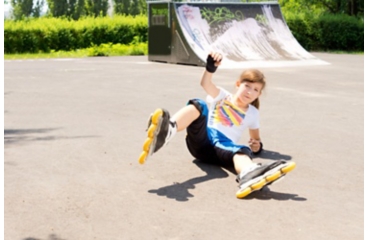
Overview
The coccyx is the tailbone. Your child can have tailbone pain from a fall or other injury. Sometimes the cause of pain is not known. A tailbone injury causes pain when your child sits or slumps, especially on a hard seat. Straining to have a bowel movement also can be very painful.
Tailbone injuries can take several months to heal, but in some cases the pain goes on even longer. You can take steps at home to ease your child's pain. In some cases, a doctor injects a corticosteroid medicine into the coccyx to reduce swelling and pain.
Follow-up care is a key part of your child's treatment and safety. Be sure to make and go to all appointments, and call your doctor if your child is having problems. It's also a good idea to know your child's test results and keep a list of the medicines your child takes.
How can you care for your child at home?
- Give pain medicines exactly as directed.
- If the doctor gave your child a prescription medicine for pain, give it as prescribed.
- If your child is not taking a prescription pain medicine, ask your doctor if your child can take an over-the-counter medicine.
- Put ice or a cold pack on your child's tailbone for 10 to 20 minutes at a time. Try to do this every 1 to 2 hours for the next 3 days (when your child is awake) or until the swelling goes down. Put a thin cloth between the ice and your child's skin.
- About 2 or 3 days after your child's injury, you can alternate ice and heat. To soothe the tailbone area, give your child a warm bath for 20 minutes, 3 or 4 times a day.
- Have your child sit on soft, padded surfaces. A doughnut-shaped pillow can take pressure off the tailbone.
- Help your child avoid constipation, because straining to have a bowel movement will increase tailbone pain.
- Include fruits, vegetables, beans, and whole grains in your child's diet each day. These foods are high in fiber.
- Encourage your child to drink plenty of fluids. If your child has to limit fluids because of a health problem, talk with your doctor before you increase how much your child drinks.
- Help your child get some exercise every day. Build up slowly to 30 to 60 minutes a day on 5 or more days of the week.
- Give your child a fiber supplement, such as Citrucel or Metamucil, every day if needed. Read and follow all instructions on the label.
- Schedule time each day for a bowel movement. A daily routine may help. Ask your child to take time and not strain when having a bowel movement.
- Help your child follow the doctor's directions for stretching and other exercises that might help with pain.
When should you call for help?
Call 911 anytime you think your child may need emergency care. For example, call if:
- Your child is unable to move a leg at all.
Call your doctor now or seek immediate medical care if:
- Your child has new or worse symptoms in the legs or buttocks. Symptoms may include:
- Numbness or tingling.
- Weakness.
- Pain.
- Your child loses bladder or bowel control.
Watch closely for changes in your child's health, and be sure to contact your doctor if:
- Your child is not getting better as expected.
Current as of: July 24, 2025
Author: Ignite Healthwise, LLC Staff
Clinical Review Board
All Ignite Healthwise, LLC education is reviewed by a team that includes physicians, nurses, advanced practitioners, registered dieticians, and other healthcare professionals.

